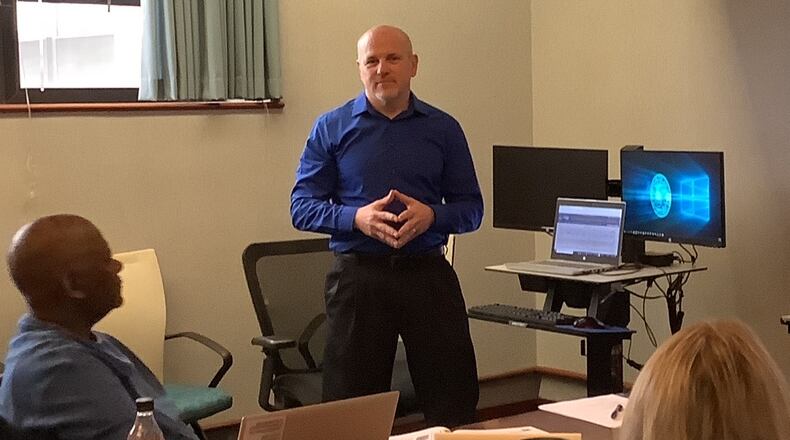“We would get huge stacks of multi-page, fan-folded papers to pour over and distribute to supervisors to assist in tracking training,” said Dan Doty, senior database developer. “Whenever an employee moved to another base, they had to take these print-outs with them, and their new training manager would sort through them to match them up with the training in the new office.”
And, since the records were hand-carried, they were often lost or damaged, which meant accomplishing the training a second time – something no one wants to do.
Then, in 1997, the Education and Training Management System, known as ETMS Web, was born. ETMS began as a secure, web-based database of complex training course information geared to supervisors and training managers in the Air Force Materiel Command.
The system allowed them to automate the process of coordinating training, reviewing quota allocations and tracking costs so they could secure the right training at the right time. It also allowed supervisors to view worker records on past job experiences and certifications.
Web development was in its infancy when web developer, Bill Bryant, began building the ETMS. Doty and Bryant have been on the project since the beginning, and they are still instrumental in keeping the system up-to-date.
“Program speed was a problem at first, but software has improved tremendously in the years since we began,” said Bryant. “Wait times for web pages to load used to be measured in seconds, not the milliseconds of today.”
A few years after the system was initiated, a subsystem was added that allowed for the creation of Individual Development Plans that tracks not only training that has been completed, but short and long-term goals as well. That, too, was geared to supervisors and training managers at first, with read-access only for individuals.
Not long after, myETMS, a fully automated system that allows individuals to monitor their own training records and IDPs, was launched. Individuals now play a major role in attaining their careers goals and can use the search features to identify opportunities in the course catalog to enhance their job development. The systems allows them to self-enroll and when necessary, disenroll, to free up slots for others.
Bill Miles is the ETMS team lead overseeing the day-to-day system operations including: project management, technical management, configuration management, computer security, software testing, end-user training, and support desk.
“ETMS is not Google,” said Miles. “Mass mandatory training is automatically included, but new offerings, such as Digital Campaign training initiatives or anything specific to certain jobs, can be manually added.”
Where ETMS really earns its keep is by automatically transferring mountains of training transactions annually, saving the Air Force and taxpayers millions of dollars.
That’s the job of Pete Roesle, another database administrator and long-time staff member. He orchestrates the data exchange thus making ETMS a hub of information sharing between multiple systems, such as myLearning, Defense Civilian Personnel Data System, Military Personnel Data System, Air Force eLearning, Joint Knowledge Online, Training Stress Score, and more.
“Besides ease of use, it also saves millions of dollars in paperwork and rework each year,” said Greg Diehl, AFMC Employee Development Manager/ETMS Program Manager.
ETMS also manages assessments for the new civilian employee onboarding process. Because of the unique feedback information ETMS collects, it provides a command overview of the success of the onboarding process.
As program manager, Diehl has witnessed the growth and value of the system. He credits the seven-person ETMS Team for their dedication and innovation.
“Program enhancement ideas are always met with a can-do attitude,” he said.
The system was originally put into place for AFMC users, but access is not restricted and other entities have taken advantage of its usefulness.
When ETMS first began, leaders asked what it could do.
“Anything is possible,” said Doty.
About the Author

